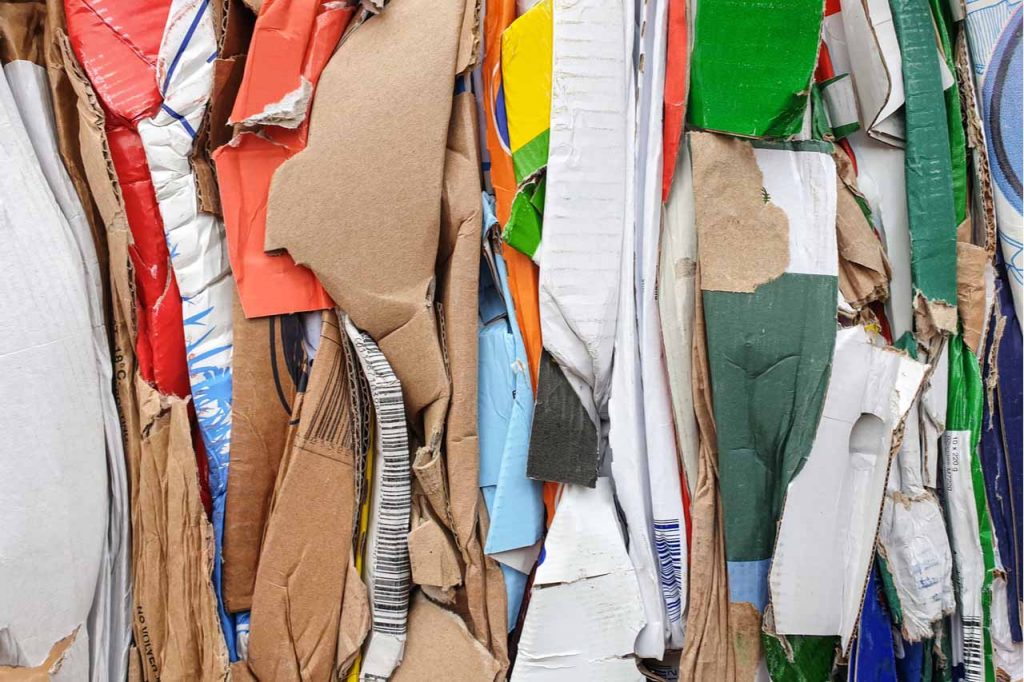
For the latest report, 18 MRFs from 11 states provided the Northeast Recycling Council with their bale pricing and processing cost data. | Shu Ba/Shutterstock
The blended value of recyclables in the Northeast region increased during the first quarter of 2020, but MRF processing costs rose even faster, according to a survey.
The Northeast Recycling Council (NERC) recently released an expanded version of its MRF bale price survey report. Earlier surveys asked MRFs in 10 northeastern states about the value of their recyclables and their processing costs. For this fourth iteration of the survey and subsequent ones, the U.S. EPA Region 3 office provided a grant allowing NERC to expand the data-gathering to additional MRFs.
For the latest report, 18 MRFs from 11 states provided data showing their blended ton value (including the expense of residual disposal) was $37.93 in the first quarter of 2020, up from $34.92 in the fourth quarter of 2019. The value of a blended ton of recyclables without factoring in residual costs was $45.34, up from $42.41 during the prior quarter.
But MRFs’ costs to sort and prepare material for sale rose faster. The average processing cost per ton was $96, up 10% over the third quarter of 2019. The processing cost has been higher each time NERC has conducted the survey, but this jump was the largest yet in terms of both dollar amount and percentage.
The NERC report also noted that while the first-quarter blended ton value was higher than the prior two quarters, it was still down from the April-June 2019 timeframe, when NERC conducted the first survey.
Noting the inclusion of additional facilities prevents an apple-to-apples comparison with results from prior surveys, NERC also compiled a separate first-quarter report with data provided by only MRFs that participated in past surveys. That document shows a blended value (with the cost of residuals factored in) at $40.25 per ton, up 15% from the previous quarter, and a blended value without residuals at $47.99, up 13% from the previous quarter. The processing cost was still $96, up 10%.
Collection strategies and bale values
NERC’s first three surveys covered MRFs across its service area: Connecticut, Delaware, Maine, Maryland, Massachusetts, New Jersey, New York, Pennsylvania, Rhode Island and Vermont (NERC covers New Hampshire but the state has no MRFs in it). The data includes single-stream MRFs, as well as some dual-stream and source-separated facilities.
The EPA grant allowed NERC to add MRFs in West Virginia and Virginia, as well as to reach out to additional facilities, including dual-stream and source-separated operations. (NERC noted it was able to add facilities in West Virginia but not Virginia, which it hopes to add in the future.)
By obtaining data from additional dual-stream and source-separated facilities, NERC was able to compare the value of recyclables from the different collection approaches. The organization found that a blended ton (without factoring in residual costs) from dual-stream and source-separated facilities was $52.72, compared with $42.35 for single-stream MRFs. But the data found the costs of managing residuals was higher for the dual-stream and source-separated MRFs, where the value of a blended ton factoring in residual costs was $42.39, compared with $43.89 for single-stream MRFs.
In terms of processing costs, the survey found much higher processing costs for single-stream facilities ($112 per ton) compared with dual-stream and source-separated ones ($60 per ton).
“As anticipated, dual-stream/source-separated enjoy higher average revenues and lower processing costs, but their cost to dispose of their residuals is significantly higher than for single-stream MRFs,” the report concludes. “This may be a result of where they are located, the distance to disposal facilities, and the tipping costs.”